How Do Well Pumps Work? Pros, Cons & Types Explained
-
Ed Malaker
- Last updated:
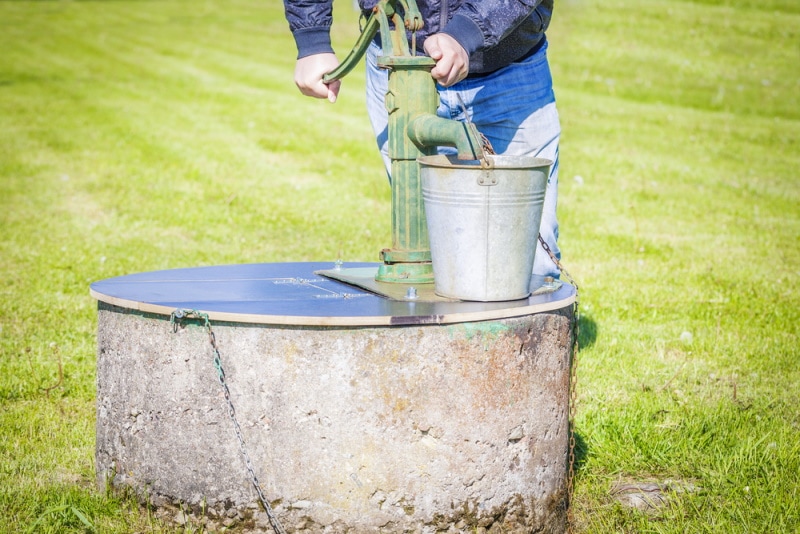
If you live outside the city, there is a good chance that your home gets its water from a local well, which requires a pump to get the water into your home. We count on these devices to keep our showers and washing machines functioning, but how do they work? If you want the answer to this question, keep reading as we explain a well pump’s functionality and discuss the pros and cons of using one.
Topics discussed in this article:
How Do They Work?
Well pumps push water out of a well and into a storage tank. The system works on pressure, which is at its highest when the tank is full; this enables the system to push the water into your home. As you use the shower or run the faucet, pressure in the system drops, and when it reaches a certain point, the pump will turn on to draw more water out of the well, and it will shut off when the pressure returns.
What Are the Different Types of Well Pumps?
1. Jet Pumps
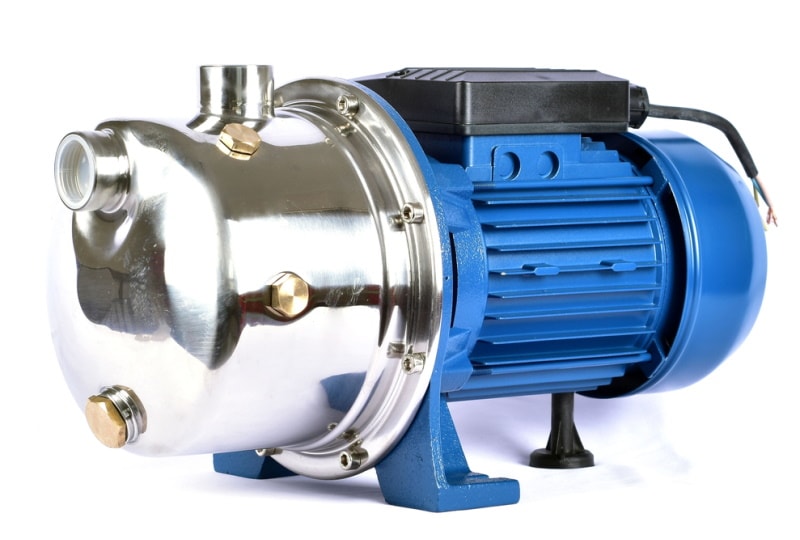
Jet pumps sit above ground and pull water out of the ground with a motor and suction pipe. Jet pumps are lightweight and easy to install. They can fit into smaller wells and don’t require much maintenance or power to operate, but their lower horsepower means water will flow more slowly and the pump will run longer.
- Easy to install
- Lightweight
- Can be used in a small well
- Slow-moving water
- Long pump-run times
2. Submersible or Convertible Pumps
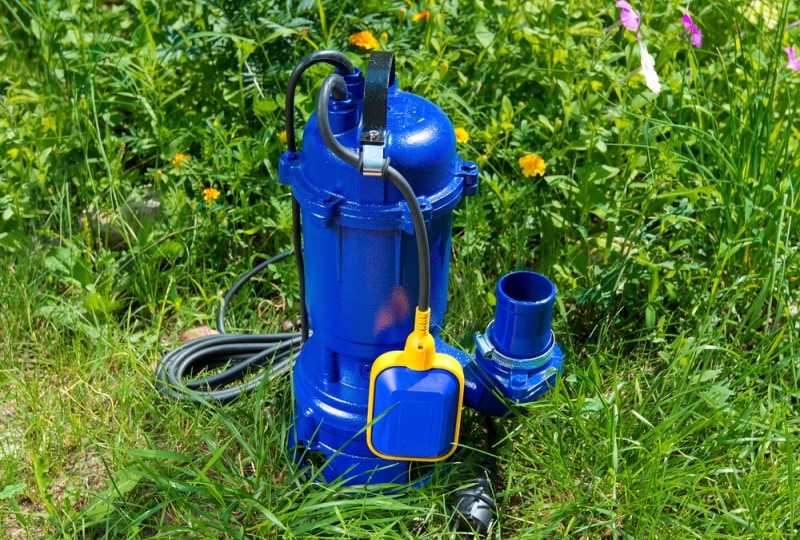
As the name suggests, submersible pumps sit underground and use pressurized water to push the water to the surface. The advantage of these pumps is that you can use them in shallow and deep wells, so they are more versatile than jet pumps. They also use more horsepower to create the pressure, so you can expect the water to flow more quickly into your home. However, they are difficult to install or repair because the pump is below ground, and in many cases, it can be expensive even to determine a problem.
- Fast water flow
- Works with shallow and deep wells
- Hard to install
- Expensive to repair
3. Hand Pumps
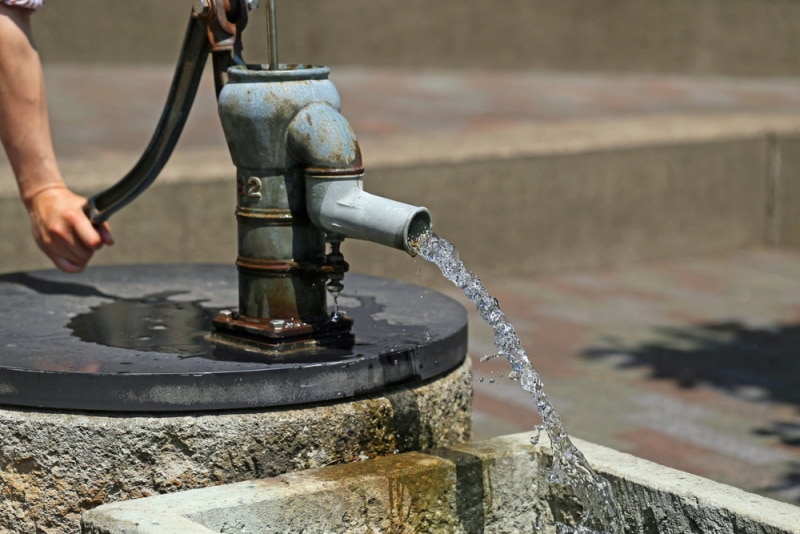
Hand pumps are what you see at many campsites and cabins in the woods. They sit above ground, like jet pumps, and require you to operate a pumping mechanism to bring up the water from the well. These pumps are easy and inexpensive to install and can last many years without maintenance, but bringing water up is a slow process requiring considerable elbow grease. You also must store the water in containers and carry it back to your residence.
- Easy to install
- Inexpensive
- Low maintenance
- Manual pump
- Water must be stored in containers
Where Are They Used?
When in a rural area without a municipal water supply, most people use well pumps to bring water from a nearby well into their homes. However, many people also use them to bring water from any nearby source to provide water for a garden, feed livestock, and many other reasons.
Advantages of a Well Pump
One of the biggest advantages of having a well on your property is that it will increase the value of your home because many people prefer the fresh taste that it provides. A well will also eliminate your monthly water bill, and the water that you receive is typically high in important nutrients and minerals. It’s environmentally friendly and protected from natural disasters that often disrupt municipal water supplies.
- Increases the value of your home
- No monthly water bills
- Healthy minerals and nutrients
- Protected from disaster
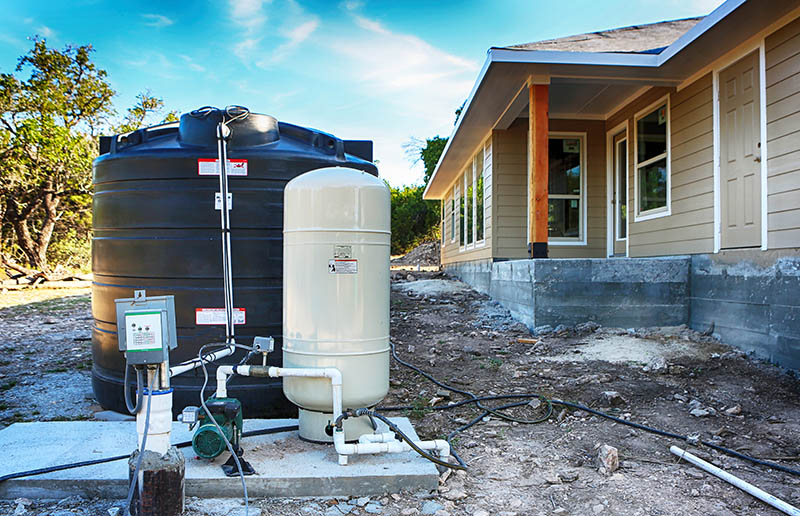
Disadvantages of a Well Pump
The disadvantages of having a well pump include you being responsible for keeping it clean. You will need to inspect the pump and system as best you can to ensure that it is working properly, and you will need to test the water frequently to ensure that it’s safe to drink. You are also responsible for correcting any problems that arise, from contaminated water to broken pipes. You will need to provide power to run the pump, which is usually electric, so you might not have water during a power failure.
- You need to test the water yourself and address any problems
- You need to maintain the pump and system yourself
- It requires electricity
- It might not operate during a power outage.
Frequently Asked Questions (FAQs)
Is Well Water Better Than City Water?
Well water contains many essential nutrients that your body needs. These nutrients only enter the water deep below ground, so they are usually not present in city water. City water often travels through ancient pipes after it leaves the plant, which might introduce contaminants. Many people also describe well water as having a fresher taste. However, city water is under constant scrutiny to remain safe for consumption, whereas well water can go untested and contain harmful bacteria.
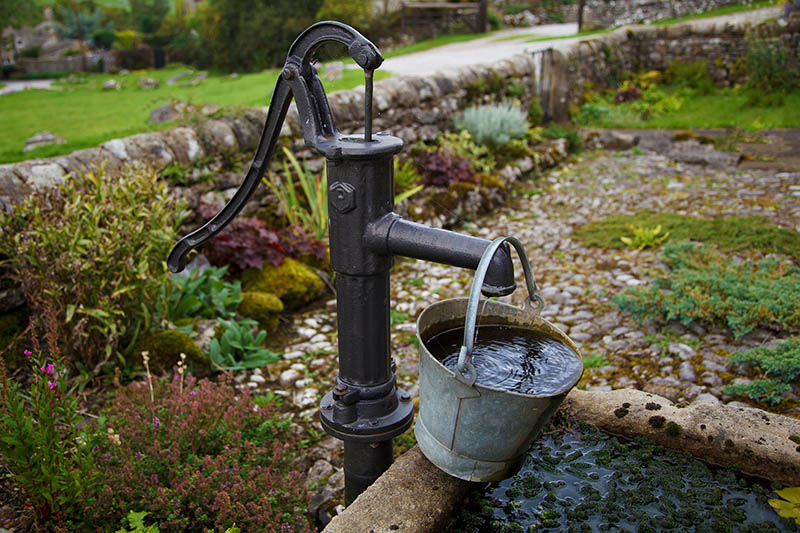
Is Well Water Cheaper Than City Water?
If your pump, pipes, and water are in good shape, well water can be considerably less expensive than city water, with no monthly payments. However, if the pump or pipes break, it can be costly to fix them, and it can also be expensive to remove harmful bacteria. Experiencing these problems can easily cost more than what you might have paid to the city.
Can I Get City Water Instead of a Well?
City water is available in many places, and there is a good chance that you can have access to it almost anywhere in the United States. If you would like to use city water instead of a well, we recommend contacting your local municipality to ask about your options.
A Quick Reference Guide
Pump Type Guide
| Depth in Feet | Ideal Pump |
| Less than 25 | Jet |
| 25–110 | Jet or Submersible |
| 110–400 | Submersible |
Conclusion
Well pumps use an electric motor to push or pull water from a well and place it into a holding tank above ground. As the tank fills, pressure in the system increases, which shuts the pump off. As you use the water in your home, the pressure decreases, which triggers the pump to turn back on and refill the tank. Jet pumps sit above ground, are lightweight, and are inexpensive to operate and maintain. However, they only offer low water pressure and are only suitable for wells down to 110 feet. Submersible pumps are more expensive but work with much deeper wells. They also provide more pressure, making the water flow faster.
Featured Image Credit: Stock video footage, Shutterstock
Contents

